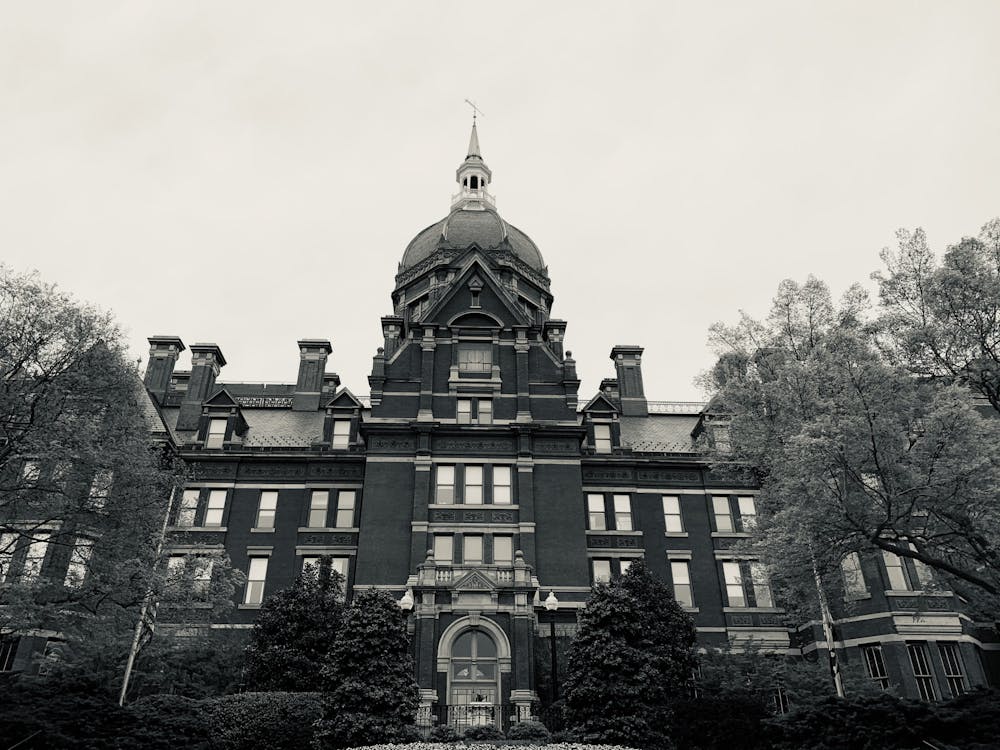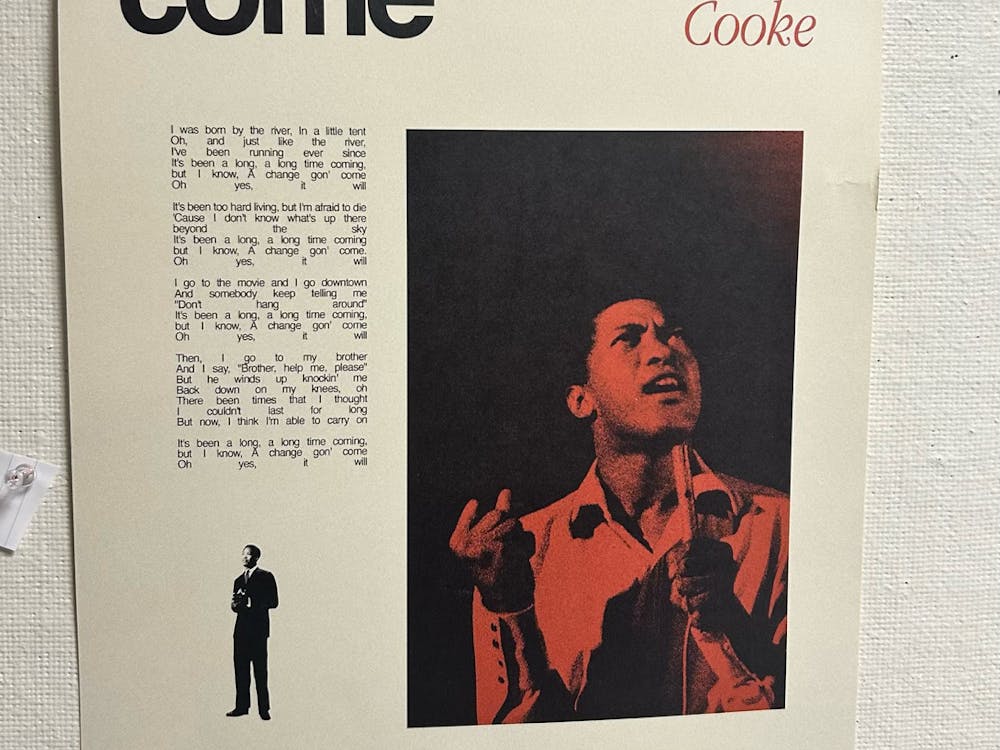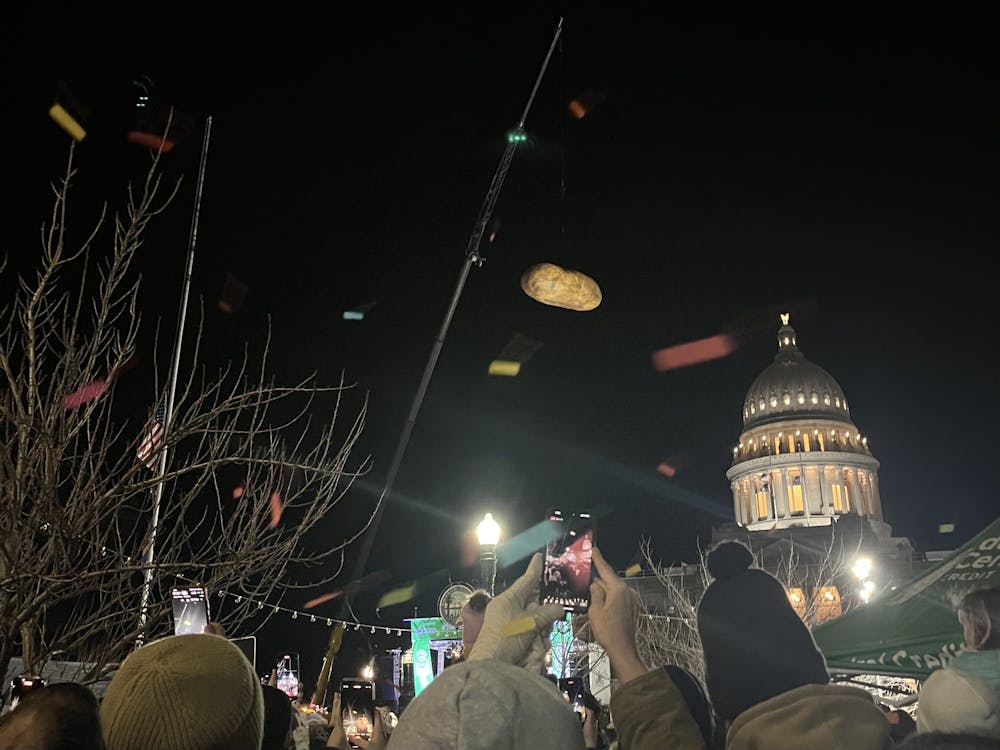Last December, it was discovered that Johns Hopkins, the University’s namesake and founder, owned enslaved people, invalidating the narrative that he was a lifelong abolitionist.
When the news emerged, freshman Cierra Gladden told The News-Letter that she had always believed that Hopkins had enslaved Black people.
“There was never space in my mind for hope that the origins of this institution weren’t racist. We know that these older institutions were built by slaves or on the backs of them, and they aren’t made for their descendants,” she said. “Black students aren’t afforded that naivete to think the origins weren’t racist. I thought we knew it already; I thought it was a given.”
Nevertheless, the lore, seemingly based entirely on a 1929 book by Hopkins’ grandniece, has been parroted for nearly a century. These findings have prompted questions and research into the University founder’s contribution of $7 million — worth around $150 million today — to establishing a hospital that served Baltimoreans “without regard to sex, age or color.”
Debunking the myth of Johns Hopkins

Allison Seyler is the program manager of Hopkins Retrospective, an initiative launched in 2013 to explore the University’s history. In an interview with The News-Letter, she recounted how she located census records from 1850 listing four enslaved people in the household of a man named Johns Hopkins.
Working alongside Society of Black Alumni Presidential Professor Martha Jones, Seyler continued to do more research. Jones and her team were able to confirm that the person listed on the census record was the University’s founder.
However, Seyler stressed that the census record only illustrates what the household looked like during that time. Historians still have not uncovered the full story of Hopkins’ past.
“We are complicating his legacy: this idea of him being identified as an abolitionist. Martha and I are trying to do due diligence and investigate that association. We’re asking why people refer to him as an ‘abolitionist’ and when people started referring to him as that,” she said. “We’re trying to deepen our understanding of why he would create a hospital that was open to people regardless of race and weave that into the narrative that we tell about ourselves and the University.”
In 1873, Hopkins outlined his vision for the Hospital in a letter to the Board of Trustees. He first instructed the Board was to conduct research on other successful hospitals, both in the U.S. and abroad, before beginning construction in 1874.
In addition to providing 13 acres of land for the Hospital, Hopkins also bequeathed yearly sums of money dedicated to building and maintaining an orphanage for children of color.
“I direct you to provide accommodation for three or four hundred children of this class; and you are also authorized to receive into this asylum, at your discretion, as belonging to such class, colored children who have lost one parent only, and, in exceptional cases, to colored children who receive are not orphans, but who may be in such circumstances as to require the aid of Charity,” he wrote.
The founder explicitly stated that the Hospital’s doors should be open to all people regardless of race.
“The indigent sick of this city and its environs, without regard to sex, age or color, who may require surgical or medical treatment, and who can be received into the Hospital without peril to the other inmates, and the poor of this city and State, of all races, who are stricken down by any casualty, shall be received into the Hospital, without charge, for such periods of time and under such regulations as you may prescribe,” he wrote.
Similar sentiments regarding the Hospital and the orphanage were expressed in Hopkins’ will. From these and other records, including a letter that Hopkins wrote to his mother, Seyler maintained that the founder was concerned about the residents of Baltimore regardless of race and the medical care they had access to.

The Hospital finally opened in 1889, 16 years after Hopkins’ death. The Hospital’s Colored Orphan Asylum opened in 1875, built separately from the Hospital but managed by its Board of Trustees. It closed its doors in 1924 when all of its orphans came of age.
Seyler explained that she is working closely with Jones, the administration and other historians to conduct further archival research. She also said that Hopkins joined the Universities Studying Slavery Consortium, created and led by the University of Virginia.
“The next step is figuring out how Hopkins Retrospective can support the advisory committee that the President has created. They are making recommendations to President Daniels on how to engage in this research process and determining ways for us to be more transparent with our work,” she said.
The Hospital’s development and evolution
Jeremy Greene, director of the History of Medicine department, is working with Jones and Seyler to uncover the University’s past.
“There’s all sorts of longer histories of rumors of suspicion of the Hospital,” he said. “For example, children walking close to campus should watch out that they’re not snatched for medical experimentation and all sorts like that. What has never fully been conducted is looking into encounters with the Hospital and who has been harmed by these encounters and how do we account for it.”
According to Greene, one point of interest is examining the process of desegregation within the Hospital.
“Was [the Hospital] desegregated all at once, or is there a stepwise process whereby at one point this myth that Black blood is different from white blood gets broken down?” he said. “Or at another point, the separation of words based on race gets broken down? Or at another point, the ability for Black physicians in the East Baltimore community to enter and admit patients to the hospital gets broken down?”
Graham Mooney, an associate professor in the History of Medicine department, previously worked with the Historic East Baltimore Community Action Coalition to teach a course on the history of public health in Baltimore. He highlighted that Hopkins needs to reorient its priorities to serve the community surrounding it.
“Hopkins isn’t the only place that does this, but they tend to treat the neighborhood as if it exists around Hopkins, rather than Hopkins existing within the community,” he said. “The structures of decision making need to be centered around the community and the people, since they are going to be most affected by this.”
The East Baltimore Medical Center (EBMC), which was founded in the wake of Martin Luther King, Jr.’s assassination in 1968, serves as a primary care provider for the community near the medical campus.
Empowered by the civil unrest that ensued, residents called on the Hospital to do more for the Black community. Greene further explained that practicing physicians who graduated from Howard University wanted to help the community.
“It’s 1968, and African American physicians who graduated from Howard were practicing in Baltimore and became a crucial part of the public health infrastructure for Black patients,” he said. “But none of them are really allowed into the Hopkins Hospital because none of them were admitted into the School of Medicine. So, the outcome was the founding of the East Baltimore Medical Center.”
Greene clarified that this community-owned primary care center was the compromise between the Hospital and East Baltimore residents. Through the agreement, East Baltimoreans would have access to a comprehensive primary care provider staffed with Hopkins personnel in a space away from the Hospital.
In April 2020, the EBMC became an additional health center under the Baltimore Medical System, though Hopkins personnel will continue to serve as health care providers.
“It’s important to realize that the stories of Hopkins’ relationship with East Baltimore are not merely stories of exploitation,” Greene said. “There are stories in which the community can exert substantial political agency and bend institutional will to provide change and more comprehensive use of primary care.”
With conflicting narratives about the Hospital’s relationship with the community, Mooney explained that there are residents who view the Hospital as problematic and others who see potential good the institution can do for the neighborhood.
“Over the past century, the Hospital has done damage to these neighborhoods,” he said. “Part of the way forward is not just changing the culture but also providing reparations for their mistakes. I don’t know what the form of those would be, but it’s clear that the medical institution is serious about uncovering the past.”

FILE PHOTO
The myth that Johns Hopkins was an abolitionist was parroted for almost a century.





